



Case Study
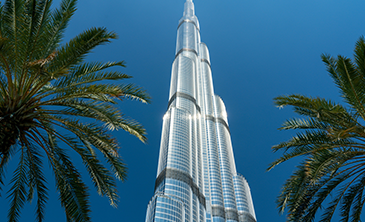
The Burj Khalifa, Dubai, UAE
The Burj Khalifa, the tallest skyscraper in the world, incorporates GFRP rebar in its construction. The use of GFRP rebar offers superior corrosion resistance, higher tensile strength, and reduced weight compared to traditional steel reinforcement. GFRP enables the structure to withstand the harsh

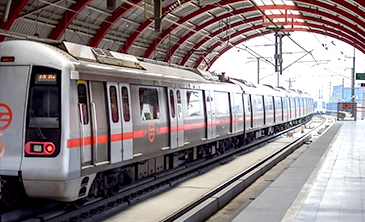
Dubai Metro Viaducts, UAE
Project Description: The Dubai Metro is a rapid transit system in the United Arab Emirates. For the construction of viaducts, GFRP bars were used as reinforcements in the concrete structures. The GFRP bars provided excellent resistance to corrosion, a crucial factor in the humid and marine environment of Dubai.
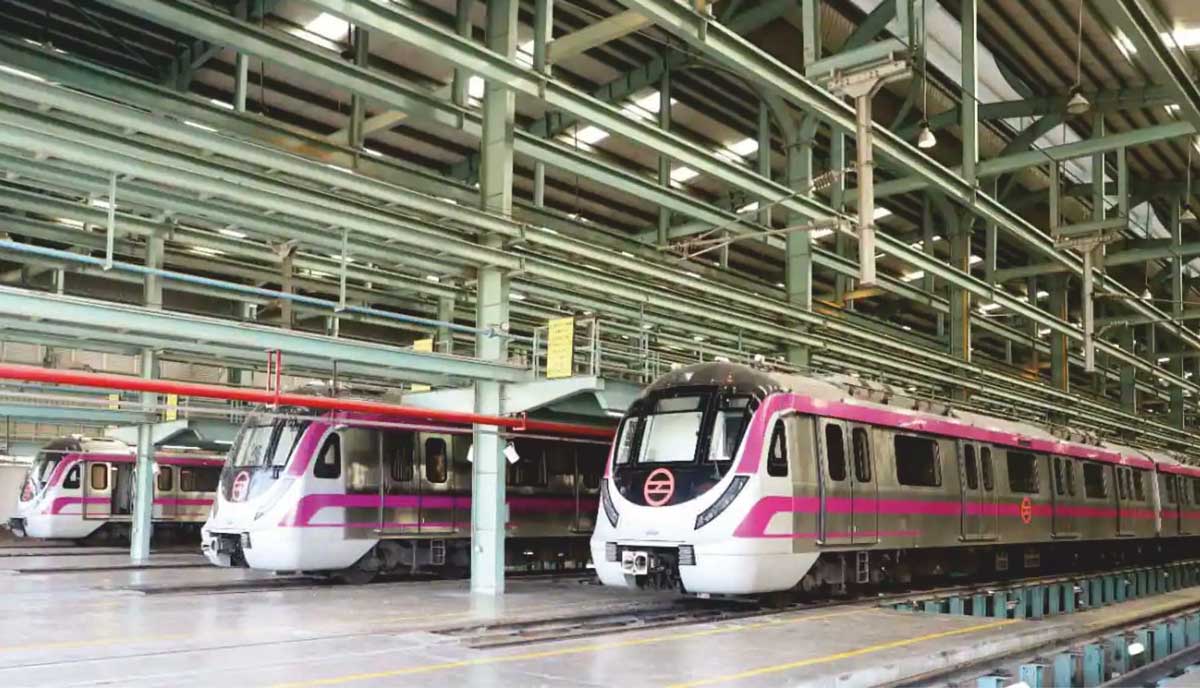
Delhi Metro
More than 20 tunnel boring machines were used simultaneously to expedite the tunnel work through 10 softeyes installed in diaphragm walls. Thanks to the cuttable nature of GFRP (glass fiber reinforced polymer) bars, TBMs can get in or out of shafts/stations in few minutes. Furthermore, 450 sets of active anchors were applied to retain walls during the excavation work. The anchors are also made of GFRP, hence the tendons can be excavated by any standard equipment, and no anchor removal is required Moreover, around 2.3 million Bartec couplers were installed to connect rebars in various parts of the concrete structures of the stations. Bartec is a bar-break performance system, designed to withstand an ultimate tensile performance of up to 800 MPa.


NHAI (IRC)
Glass fiber-reinforced polymer (GFRP) materials, which are being used in military and aerospace applications for many years, have been developed into sustainable and cost effective construction solutions for the highway community’s infrastructure needs. One of the reasons why bridges and roads should be reinforced with composites is the ability of GFRP to effectively encounter the shortcomings of traditional materials such as steel. Sufficient progress has been made in an attempt to start the widespread application of GFRP to highway infrastructure. It is understandable that the construction industry has to make sure whether or not GFRP technology holds to promise. Nevertheless, the superior properties of composite materials lead to widespread use of GFRP construction products in transportation infrastructure applications. While it is an established fact that composites can dramatically increase the service life of highway infrastructure, it is important to determine how GFRP reinforcement and other materials can be best deployed. A significant amount of studies and research has been conducted to investigate the durability of GFRP in highway infrastructure applications.
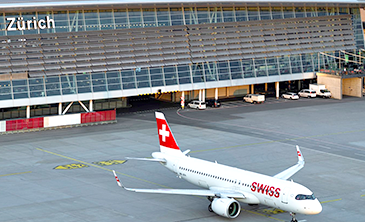
Zurich Airport
Special reinforcement to enhance flight safety Manoeuvring aircraft on the ground is no less challenging than when they are airborne; the process is just slower. All larger airports constitute a complex system of take-off and landing runways and taxiways with built-in induction loops that help air traffic control do its job. Like traffic lights on a road Ground lights – known as red stop bars – that are clearly visible to pilots mark the “red line” in the truest sense of the word to warn of neuralgic points. Under no circumstances may these lines be crossed without air traffic control’s permission. Using induction to detect danger Induction loops in the ground before and after the red lights track aircraft movement. They create an electro-magnetic field that changes as soon as a mass with its own magnetic field – in this case a plane – enters it.

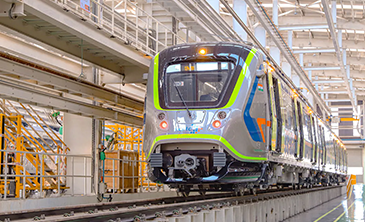
Patna Metro Rail, India
The Patna Metro Rail project in India incorporated GFRP bars and bent elements in the construction of elevated viaducts and stations. GFRP materials were chosen to withstand the region’s monsoon climate, reducing maintenance costs and increasing the service life of the structures.
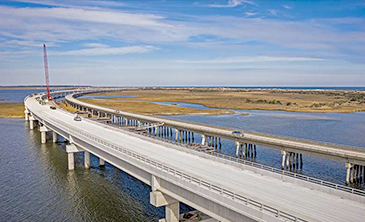
Herbert C. Bonner Bridge Replacement, USA
Project Description: The replacement of the Herbert C. Bonner Bridge in North Carolina, USA, utilized GFRP bars in the concrete elements to combat the corrosive effects of the marine environment and extend the bridge’s service life.

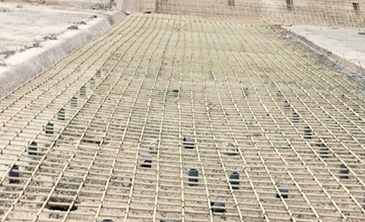
Jizan Flood Mitigation Channel, the world's biggest GFRP project
The new Jizan Economic City is an industrial and commercial hub with a busy port on the Red Sea. The region is prone to flooding due to poor drainage and heavy seasonal rainfall. A major Saudi Aramco project for the area is the 23km-long Flood Mitigation Channel. The channel will play a vital role in protecting infrastructure and the community who live in the city. It is also home to Saudi Aramco’s Jizan oil refinery which processes 400,000 barrels of crude per day. When completed, it will be the world’s largest project to be constructed using glass fibre-reinforced polymer (GFRP) composite rebar as its concrete reinforcement. Mandating the use of GFRP rebar is part of their non-metallic initiative, a positive step towards fighting corrosion and moving towards a more sustainable approach to infrastructure builds. The channel marks a significant turning point in the infrastructure sector. It is one of many large scale projects choosing GFRP rebar for its concrete reinforcement worldwide.
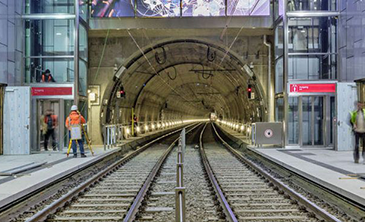
Wehrhahn Underground Line, Germany
Düsseldorf has built the city’s largest underground railway – the “Wehrhahn Line”. This urban transport route expands the local rail network, adding six underground and two overground stations. Top down construction methods were used to build the underground stations in an effort to minimise traffic disruptions on the surface. Because space was confined, the diaphragm walls for the stations and the slabs they supported were first installed on one side of the street, and then on the other. The diaphragm walls for the new underground stations contain GFRP reinforcement. GFRP ensures that tunnel borer can drive straight through the reinforcement, which saves time and money. The other finishing works are performed underground.

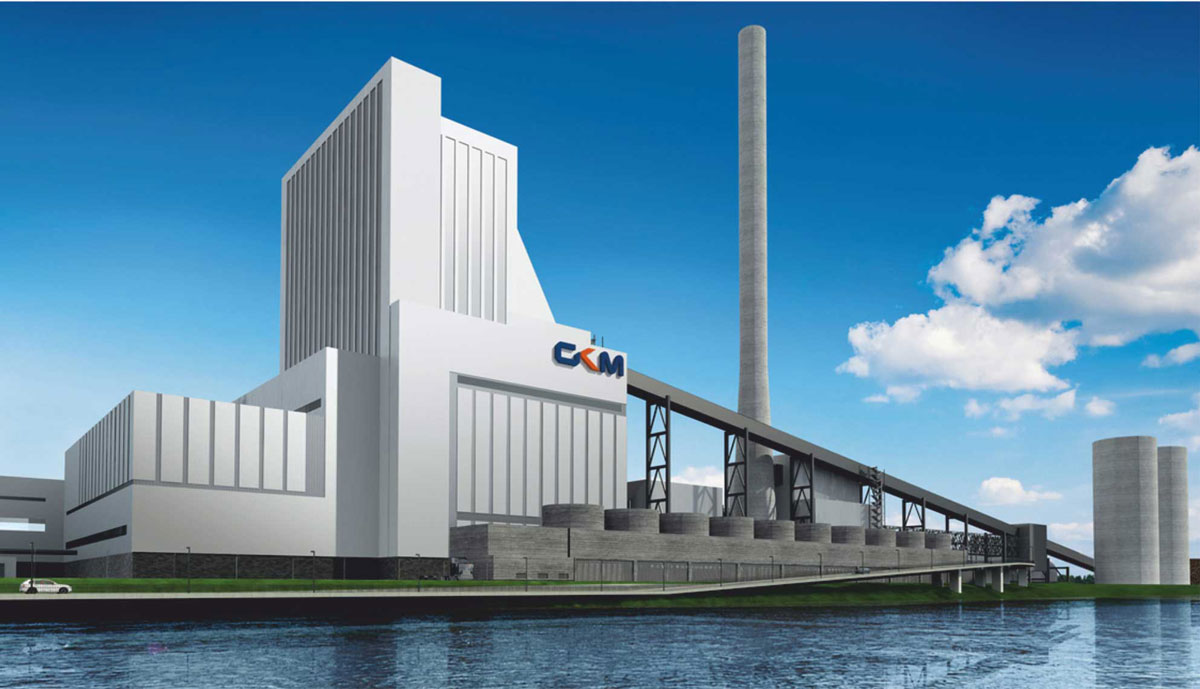
Large power station (GKM), Germany
In preparation for the subsequent pipe penetrations, four drilled piles were reinforced with machinable GFRP Bars in the area of the cooling water intake structures. In the second phase in autumn 2010, the four piles were then reinforced with GFRP along the entire length, not just in the area of the subsequent penetration. In a second part of the GKM project, GFRP bars and bent elements stirrups were used as non-ferrous reinforcement where lines were channelled through floor slabs. Planners of LAP opted for a design that enabled installation of the GFRP bent elements stirrups without the need for structural load-bearing ability.
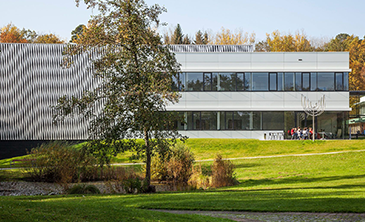
Max Planck Institute Precision Laboratory, UK
When building the precision laboratory at the Max Planck Institute for Solid State Research in Stuttgart, GFRP reinforcement was chosen. Scientists at this precision laboratory examine the electrical conductivity of – especially nanoscale – solid matter and focus on how the structure of the relevant material influences its electrical, mechanical or magnetic properties. External influences must be minimised to ensure the precise functioning of the measuring equipment. The issue of electro-magnetic sensitivity had to be taken into account at the early stages of planning the new precision laboratory. Since conventional steel reinforcement was not an option in the immediate vicinity of the experiments, GFRP reinforcement was chosen. It is not electro-magnetically conductive yet still has composite properties that are similar to reinforcing steel.

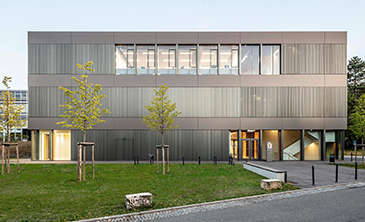
Centre for Applied Quantum Technology, Germany
The Center for Applied Quantum Technology (ZAQuant) at the University of Stuttgart in Vaihingen, Germany, is an interdisciplinary research building. When planning the floor and the supporting structure, the requirements placed on the building were extraordinarily high. The reason for this is that the experiments must take place with the exclusion of low frequency magnetic fields. All foundation blocks of the high-precision rooms as well as the test tables therefore had to be provided with reinforcement that is neither electrically conductive nor magnetizable. The optimal solution for this special application was GFRP reinforcement, made of glass fibre composite material. In this way, an electromagnetic decoupling of the components could be achieved and electromagnetic interference and external influences could be minimized.

YAS Island Formula 1 Racetrack - the finishing line
A category 1 racetrack with 40 pit buildings and 5.5km of race tracks, Yas Island F1 racetrack is a popular circuit to race in the Formula 1 calendar. Precision timing is critical with milliseconds making the difference to first past the post. Metallic materials can cause interference to sensitive equipment. GFRP bar was used as the main reinforcement due to its non electromagnetic and non-magnetic properties.

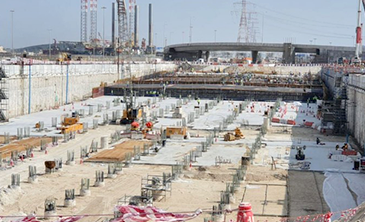
Secant Pile application for Construction of Zayed Road Network in Mina Zayed Area Main Tunnel, Abu Dhabi UAE
The circular design needed to provide a design requiring a combination of moment and shear loads. Design safety and performance under combined loads were checked and approved. The use of GFRP rebar allowed for an economic and safe design. GFRP bar and bent elements were used in an area of the main tunnel where the structure will be subjected to heavy loads. The high tensile strength and high modulus of elasticity were ideal plus it allowed for good splice lengths. With the high values of GFRP bars, the weight was a lot less compared to other suppliers. Why is GFRP rebar ideal for secant pile applications? Overall, GFRP rebar provides a lightweight and corrosion-free material for secant pile applications. It’s quicker to work with, easier to cut, and provides a 100-year service life.
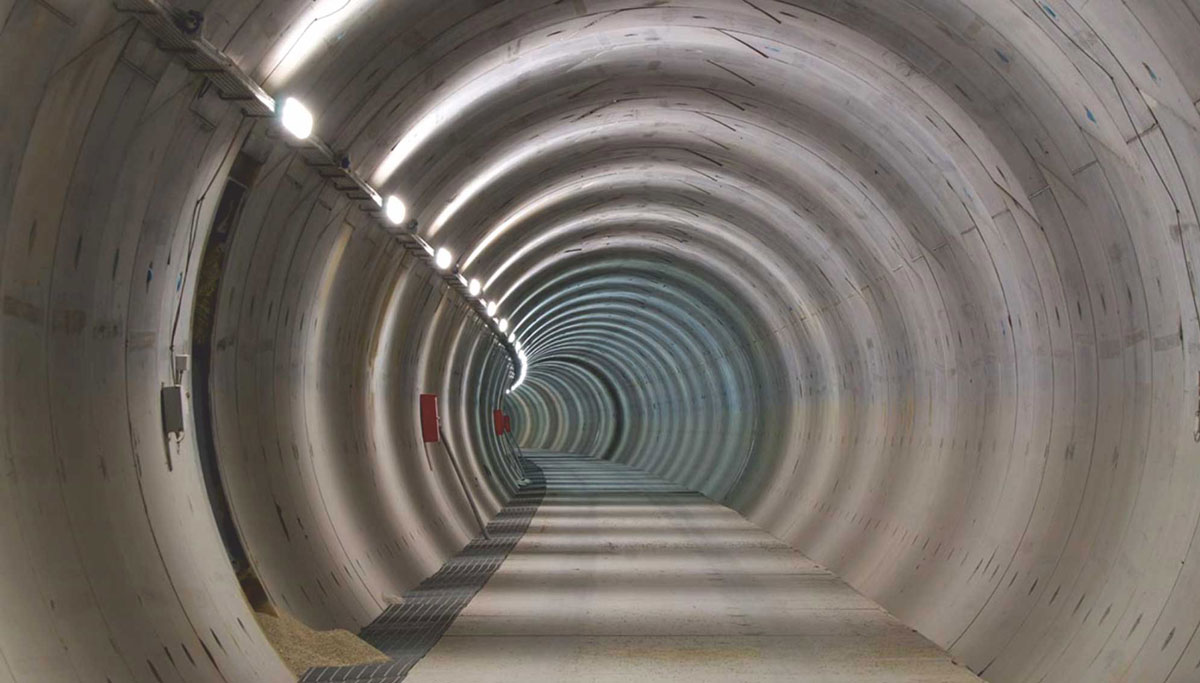
North" tunnel section (Brenner mountain pass in the Alps), 2006
In order to avoid the penetration of induction currents from the adjacent subway tunnel, reinforcement of bore piles and walls of the lower floors is steel-free. The mesh of GFRP rebar of Ø8 mm is used. Reinforcement objectives — corrosion resistance and prevention of cracking. Reinforced area — 6400 m2.

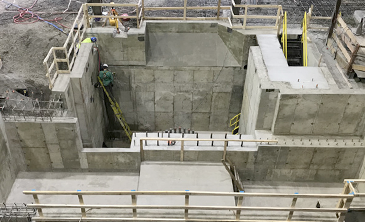
Steel Furnace Foundation
GFRP Rebar is reinforcement and it is one of the best material for roads construction. GFRP Rebar is an alternative of Steel reinforcement bars. It has several advantages like light weight, corrosion resistant, and high strength. GFRP Rebar is a environment friendly rebar. GFRP rebar is resistant to corrosion and does not rust. GFRP Rebar is an alternative of steel reinforcement bars. steel bars would degrade the foundation quickly. This makes it particularly useful in foundations that are in contact with soil and water. GFRP Rebar is a durable material for foundation. It can withstand heavy loads and extreme weather conditions. GFRP Rebar require low maintenance cost. It does not rust or degrade the construction so less cost of maintenance over life span of structure or construction.
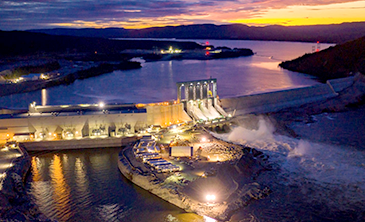
Muskrat Falls Hydroelectric Project, Canada
Project Description: The Muskrat Falls Hydroelectric Project in Canada involved the construction of a dam and powerhouse complex. GFRP rebar and mesh were utilized to reinforce concrete elements due to their non-corrosive properties, ensuring long-term durability in the harsh, cold climate of Labrador.


-
Still have questions?
Our team will answer them and help you to make the right choice